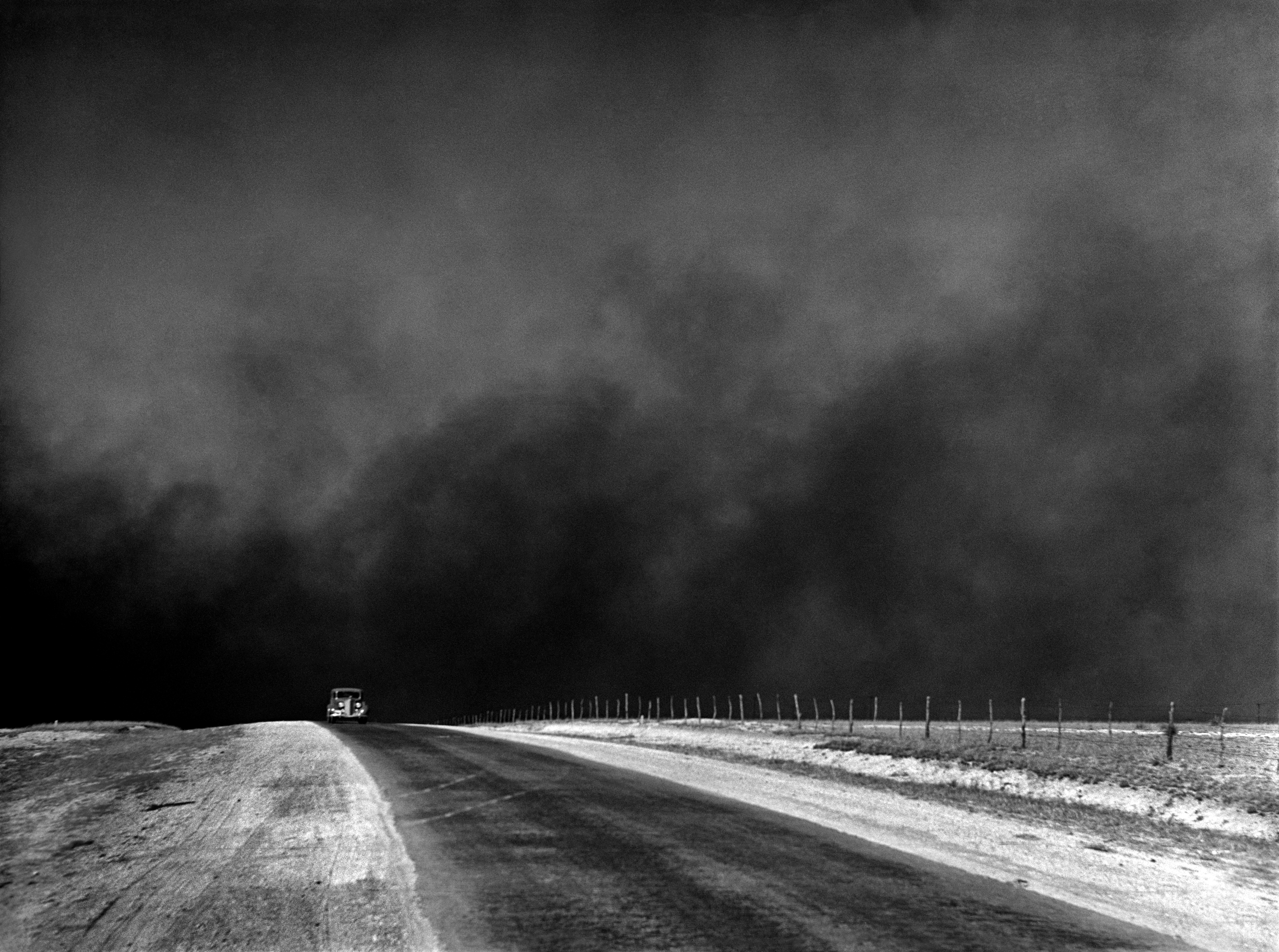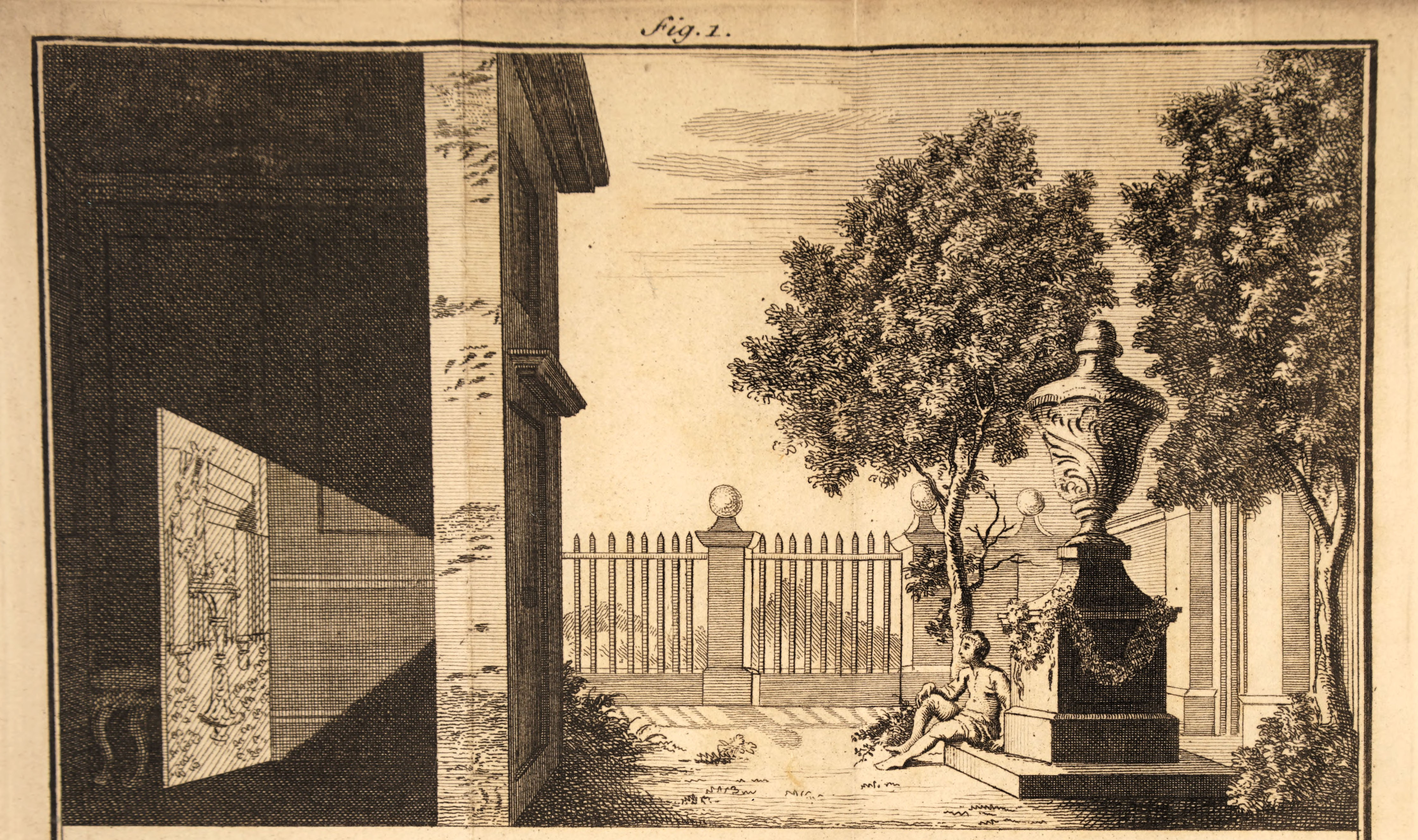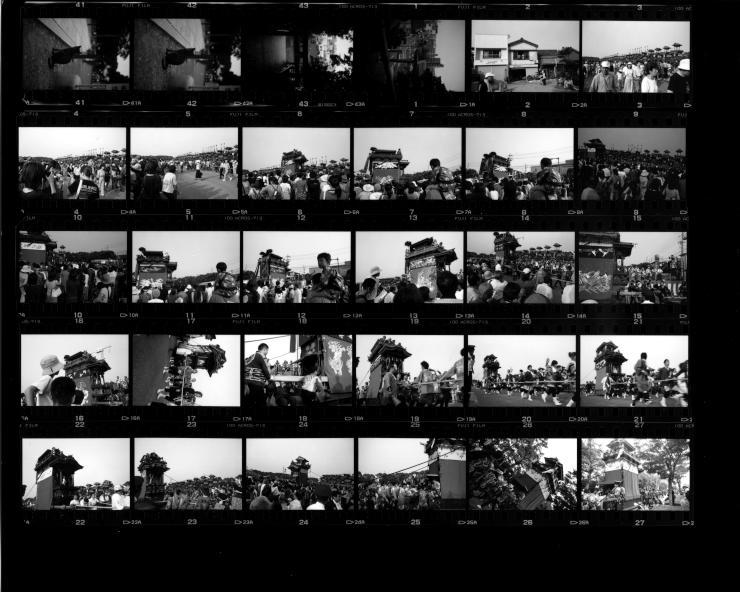|
Paper Negative
The paper negative process consists of using a negative printed on paper (either photographically or digitally) to create the final print of a photograph, as opposed to using a modern negative on a film base of cellulose acetate. The plastic acetate negative (which is what modern films produce) enables the printing of a very sharp image intended to be as close a representation of the actual subject as is possible. By using a negative based on paper instead, there is the possibility of creating a more ethereal image, simply by using a type of paper with a very visible grain, or by drawing on the paper or distressing it in some way. One of the original forms of photography was based on the paper negative process. William Henry Fox Talbot's paper negative process, which was used to create his work "The Pencil of Nature", used a negative created on paper treated with silver salts, which was exposed in a camera obscura to create the negative and then contact printed on a similar pa ... [...More Info...] [...Related Items...] OR: [Wikipedia] [Google] [Baidu] |
Negative (photography)
In photography, a negative is an image, usually on a strip or sheet of transparent plastic film, in which the lightest areas of the photographed subject appear darkest and the darkest areas appear lightest. This reversed order occurs because the extremely light-sensitive chemicals a camera film must use to capture an image quickly enough for ordinary picture-taking are darkened, rather than bleached, by exposure to light and subsequent photographic processing. In the case of color negatives, the colors are also reversed into their respective complementary colors. Typical color negatives have an overall dull orange tint due to an automatic color-masking feature that ultimately results in improved color reproduction. Negatives are normally used to make positive prints on photographic paper by projecting the negative onto the paper with a photographic enlarger or making a contact print. The paper is also darkened in proportion to its exposure to light, so a second reversal result ... [...More Info...] [...Related Items...] OR: [Wikipedia] [Google] [Baidu] |
Paper
Paper is a thin sheet material produced by mechanically or chemically processing cellulose fibres derived from wood, rags, grasses or other vegetable sources in water, draining the water through fine mesh leaving the fibre evenly distributed on the surface, followed by pressing and drying. Although paper was originally made in single sheets by hand, almost all is now made on large machines—some making reels 10 metres wide, running at 2,000 metres per minute and up to 600,000 tonnes a year. It is a versatile material with many uses, including printing, painting, graphics, signage, design, packaging, decorating, writing, and cleaning. It may also be used as filter paper, wallpaper, book endpaper, conservation paper, laminated worktops, toilet tissue, or currency and security paper, or in a number of industrial and construction processes. The papermaking process developed in east Asia, probably China, at least as early as 105 CE, by the Han court eunuch Cai Lun, although the ... [...More Info...] [...Related Items...] OR: [Wikipedia] [Google] [Baidu] |
Photograph
A photograph (also known as a photo, image, or picture) is an image created by light falling on a photosensitive surface, usually photographic film or an electronic image sensor, such as a CCD or a CMOS chip. Most photographs are now created using a smartphone/camera, which uses a lens to focus the scene's visible wavelengths of light into a reproduction of what the human eye would see. The process and practice of creating such images is called photography. Etymology The word ''photograph'' was coined in 1839 by Sir John Herschel and is based on the Greek φῶς (''phos''), meaning "light," and γραφή (''graphê''), meaning "drawing, writing," together meaning "drawing with light." History The first permanent photograph, a contact-exposed copy of an engraving, was made in 1822 using the bitumen-based "heliography" process developed by Nicéphore Niépce. The first photographs of a real-world scene, made using a camera obscura, followed a few years later at Le Gras, ... [...More Info...] [...Related Items...] OR: [Wikipedia] [Google] [Baidu] |
Film Base
A film base is a transparent substrate which acts as a support medium for the photosensitive emulsion that lies atop it. Despite the numerous layers and coatings associated with the emulsion layer, the base generally accounts for the vast majority of the thickness of any given film stock. Since the late 19th century, there have been three major types of film base in use: nitrate (until about 1951), acetate, and polyester. Nitrate In the literature of photography "nitrate" is used as a synonym for the chemical nitrocellulose. It is also referred to as "cellulose nitrate". Nitrocellulose is guncotton, the first replacement propellant for gun powder in firearms. Film stock with a nitrate base was the first transparent flexible plasticized base commercially available, thanks to celluloid developments by John Carbutt, Hannibal Goodwin, and Eastman Kodak in the 1880s. Eastman was the first to manufacture the film stock for public sale, in 1889. Unfortunately, nitrate also had the ... [...More Info...] [...Related Items...] OR: [Wikipedia] [Google] [Baidu] |
Cellulose Acetate
In biochemistry, cellulose acetate refers to any acetate ester of cellulose, usually cellulose diacetate. It was first prepared in 1865. A bioplastic, cellulose acetate is used as a film base in photography, as a component in some coatings, and as a frame material for eyeglasses; it is also used as a synthetic fiber in the manufacture of cigarette filters and playing cards. In cellulose acetate film, photographic film, cellulose acetate film replaced nitrate film in the 1950s, being far less flammable and cheaper to produce. History In 1865, French chemist Paul Schützenberger discovered that cellulose reacts with acetic anhydride to form cellulose acetate. The German chemists Arthur Eichengrün and Theodore Becker invented the first soluble forms of cellulose acetate in 1903. In 1904, Camille Dreyfus (chemist), Camille Dreyfus and his younger brother Henri Dreyfus, Henri performed chemical research and development on cellulose acetate in a shed in their father's garden in Basel ... [...More Info...] [...Related Items...] OR: [Wikipedia] [Google] [Baidu] |
Photography
Photography is the art, application, and practice of creating durable images by recording light, either electronically by means of an image sensor, or chemically by means of a light-sensitive material such as photographic film. It is employed in many fields of science, manufacturing (e.g., photolithography), and business, as well as its more direct uses for art, film and video production, recreational purposes, hobby, and mass communication. Typically, a lens is used to focus the light reflected or emitted from objects into a real image on the light-sensitive surface inside a camera during a timed exposure. With an electronic image sensor, this produces an electrical charge at each pixel, which is electronically processed and stored in a digital image file for subsequent display or processing. The result with photographic emulsion is an invisible latent image, which is later chemically "developed" into a visible image, either negative or positive, depending on the purp ... [...More Info...] [...Related Items...] OR: [Wikipedia] [Google] [Baidu] |
The Pencil Of Nature
''The Pencil of Nature'' is a book by William Henry Fox Talbot which was the first commercially published book to be illustrated with photographs. Published by Longman, Brown, Green & Longmans in six fascicles between 1844 and 1846, the book detailed Talbot's development of the calotype photographic process and included 24 calotype prints, each one pasted in by hand, illustrating some of the possible applications of the new technology. It is regarded as an important and influential work in the history of photography and was described by the Metropolitan Museum of Art as "a milestone in the art of the book greater than any since Gutenberg's invention of moveable type." At the time ''The Pencil of Nature'' was published, photography was still an unfamiliar concept for most people—the ''Athenaeum'' magazine described Talbot's work as "modern necromancy"—and the book was the first opportunity for the general public to see what photographs looked like. To avoid any confusion, Ta ... [...More Info...] [...Related Items...] OR: [Wikipedia] [Google] [Baidu] |
Silver
Silver is a chemical element with the Symbol (chemistry), symbol Ag (from the Latin ', derived from the Proto-Indo-European wikt:Reconstruction:Proto-Indo-European/h₂erǵ-, ''h₂erǵ'': "shiny" or "white") and atomic number 47. A soft, white, lustrous transition metal, it exhibits the highest electrical conductivity, thermal conductivity, and reflectivity of any metal. The metal is found in the Earth's crust in the pure, free elemental form ("native silver"), as an alloy with gold and other metals, and in minerals such as argentite and chlorargyrite. Most silver is produced as a byproduct of copper, gold, lead, and zinc Refining (metallurgy), refining. Silver has long been valued as a precious metal. Silver metal is used in many bullion coins, sometimes bimetallism, alongside gold: while it is more abundant than gold, it is much less abundant as a native metal. Its purity is typically measured on a per-mille basis; a 94%-pure alloy is described as "0.940 fine". As one of th ... [...More Info...] [...Related Items...] OR: [Wikipedia] [Google] [Baidu] |
Camera Obscura
A camera obscura (; ) is a darkened room with a aperture, small hole or lens at one side through which an image is 3D projection, projected onto a wall or table opposite the hole. ''Camera obscura'' can also refer to analogous constructions such as a box or tent in which an exterior image is projected inside. Camera obscuras with a lens in the opening have been used since the second half of the 16th century and became popular as aids for drawing and painting. The concept was developed further into the photographic camera in the first half of the 19th century, when camera obscura boxes were used to exposure (photography), expose photosensitivity, light-sensitive materials to the projected image. The camera obscura was used to study eclipses without the risk of damaging the eyes by looking directly into the sun. As a drawing aid, it allowed tracing the projected image to produce a highly accurate representation, and was especially appreciated as an easy way to achieve proper grap ... [...More Info...] [...Related Items...] OR: [Wikipedia] [Google] [Baidu] |
Contact Printing
A contact print is a photographic image produced from film; sometimes from a film negative, and sometimes from a film positive or paper negative. In a darkroom an exposed and developed piece of film or photographic paper is placed emulsion side down, in contact with a piece of photographic paper, light is briefly shone through the negative or paper and then the paper is developed to reveal the final print. The defining characteristic of a contact print is that the resulting print is the same size as the original, rather than having been projected through an enlarger. Basic tools Contact printing is a simple and inexpensive process. Its simplicity avails itself to those who may want to try darkroom processing without buying an enlarger. One or more negatives are placed on a sheet of photographic paper which is briefly exposed to a light source. The light may come from a low wattage frosted bulb hanging above an easel which holds them together, or contained in an exposure ... [...More Info...] [...Related Items...] OR: [Wikipedia] [Google] [Baidu] |
Positive (photography)
Positive has multiple meanings in the world of photography. The two main definitions of positive photography include positive space and positive film. Positive space Positive space is the idea that any part of a photo that includes the subject, stands out from the rest of the photo. It is key component in most photographs that helps convey emotions towards an audience. The technique can illustrate emotions ranging from crowdedness, to power, to chaos, or even to movement in a photo. Positive photos often busy and active so that most of the focus is drawn towards the subject. It is important to note that positive space in photography is usually balanced with negative space to make an appealing composition. For example, if a photo is over-crowded and it is hard to distinguish what is and is not the subject of the photo (meaning there is a lack of definition or negative space, or there's too much negative space), then the photo may not be compositionally well thought out or perhaps fi ... [...More Info...] [...Related Items...] OR: [Wikipedia] [Google] [Baidu] |
Camera Operator
A camera operator, or depending on the context cameraman or camerawoman, is a professional operator of a film camera or video camera as part of a film crew. The term "cameraman" does not imply that a male is performing the task. In filmmaking, the cinematographer or director of photography (DP or DoP) is sometimes called lighting cameraman or first cameraman. The DP may operate the camera themselves, or enlist the aid of a camera operator or second cameraman to operate it or set the controls. The first assistant cameraman (1st AC), also known as a focus puller, is responsible for maintenance of the camera, such as clearing dirt from the film gate and adjusting the follow focus. A second assistant cameraman (2nd AC), also known as a clapper loader, might be employed to load film, slate scenes, or maintain the camera report (a log of scenes, takes, rolls, photographic filters used, and other production data). A camera operator in a video production may be known by titles like ... [...More Info...] [...Related Items...] OR: [Wikipedia] [Google] [Baidu] |









